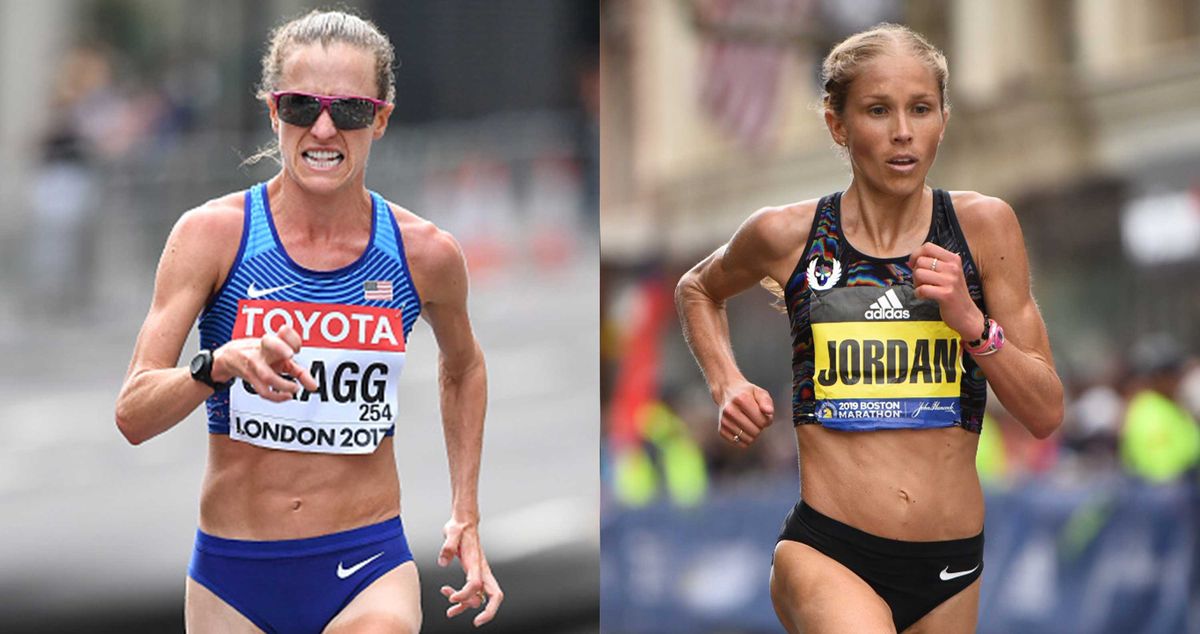Home>Misc>Featured>Which Burns More Calories Sprinting Or Long Distance Running


Featured
Which Burns More Calories Sprinting Or Long Distance Running
Modified: August 22, 2023
"Discover which burns more calories between sprinting and long distance running in our featured article. Find out the best way to achieve your fitness goals!"
Introduction
When it comes to selecting the most effective exercise for burning calories, there is often a debate between sprinting and long distance running. Both forms of exercise have their benefits and drawbacks, and understanding the differences between them can help you make an informed decision about which one suits your fitness goals best.
Energy expenditure plays a crucial role in weight management and overall fitness. The more calories we burn during exercise, the closer we get to achieving our desired weight and body composition. Sprinting and long distance running differ significantly in terms of intensity, duration, and the muscles they engage. By understanding how these factors impact energy expenditure, we can determine which form of exercise is more efficient for calorie burning.
Sprinting, as the name suggests, involves short bursts of intense effort. It requires explosive power and engages fast-twitch muscles fibers. On the other hand, long distance running involves a steady, sustained effort over a prolonged period. It primarily uses slow-twitch muscle fibers and places a continuous demand on the cardiovascular system.
Various factors influence the number of calories burned during sprinting or long distance running. These include body weight, intensity of exercise, fitness level, terrain, and even external conditions such as wind resistance. By understanding these factors, we can make informed decisions about our exercise routine to maximize calorie burn and achieve our fitness goals efficiently.
In this article, we will delve into the differences between sprinting and long distance running when it comes to calorie burn. We will explore the specific benefits and drawbacks of each form of exercise, helping you gain a clear understanding of how they impact energy expenditure. So, let’s dive in and discover which burns more calories: sprinting or long distance running.
Energy Expenditure During Exercise
Understanding energy expenditure during exercise is essential for determining which activity burns more calories: sprinting or long distance running. Calorie burn is influenced by various factors, including the intensity and duration of the exercise, as well as individual characteristics such as body weight and fitness level.
Sprinting, being a high-intensity exercise, leads to a rapid increase in calorie burn. This is due to the explosive and maximal effort required during sprints, which activates a large number of muscles and raises the heart rate significantly. The body taps into its glycogen stores, breaking down carbohydrates for energy and resulting in a higher calorie burn per minute.
On the other hand, long distance running requires a sustained effort over an extended period. While the intensity may be lower compared to sprinting, the duration of the exercise compensates for it. Running for long distances forces the body to tap into its fat stores for energy, leading to a higher calorie burn over time.
According to a study published in the Journal of Sports Sciences, a person weighing around 70 kilograms (154 pounds) can burn approximately 372 calories during a 30-minute sprint session. Comparatively, the same individual can burn around 280 calories during a 30-minute jog at a moderate pace. However, it’s important to note that the exact calorie burn will vary based on individual factors.
Another crucial factor to consider is the afterburn effect, also known as excess post-exercise oxygen consumption (EPOC). High-intensity exercises like sprinting result in an elevated metabolic rate even after the workout is completed, leading to continued calorie burn. This effect is less pronounced in long distance running, where the metabolic rate returns to normal relatively quickly.
In summary, while sprinting burns more calories in a shorter amount of time, long distance running can also be an effective way to burn calories due to its extended duration. The choice between sprinting and long distance running depends on individual preferences, fitness goals, and overall fitness level. To optimize calorie burn, it can be beneficial to incorporate both forms of exercise into your routine, alternating between high-intensity sprints and longer endurance runs.
Sprinting vs. Long Distance Running
When comparing sprinting and long distance running, it is important to consider the key differences in terms of intensity, duration, and overall impact on the body. Both forms of exercise offer unique benefits and drawbacks, and understanding these can help you determine which one aligns better with your fitness goals.
Sprinting is characterized by short, intense bursts of effort. It requires explosive power and engages fast-twitch muscle fibers, which are responsible for generating quick and powerful movements. The high-intensity nature of sprinting leads to a rapid increase in heart rate and calorie burn. It also helps develop explosive strength, speed, and power.
On the other hand, long distance running involves a steady, sustained effort over extended periods. It primarily utilizes slow-twitch muscle fibers, which are responsible for endurance and efficiency. The cardiovascular system is continually challenged during long distance running, leading to improvements in stamina, cardiovascular health, and endurance performance.
One of the key differences is the duration of each exercise. Sprinting is a short and intense activity, lasting typically from a few seconds to a minute. In contrast, long distance running involves continuous movement over extended periods, ranging from several minutes to hours. This difference in duration impacts the overall energy expenditure and the specific physiological adaptations that occur within the body.
Sprinting, due to its high-intensity nature, burns more calories per minute compared to long distance running. The explosive efforts involved in sprinting stimulate the body to use more glycogen (stored carbohydrates) as fuel, resulting in a higher calorie burn during the exercise. In contrast, long distance running relies more on fat as a fuel source, leading to a lower calorie burn per minute but a potentially higher overall calorie burn over time.
Another important consideration is the impact on muscle development. Sprinting involves powerful contractions of muscles, particularly in the lower body, which can contribute to the development of lean muscle mass and improved muscular strength and power. Long distance running, while still engaging muscles and promoting endurance, may not stimulate as much muscle growth or strength development due to the lower intensity and longer duration.
In summary, sprinting and long distance running offer different benefits and drawbacks. Sprinting is ideal for those looking to improve explosive power, speed, and calorie burn in a shorter time frame. On the other hand, long distance running focuses on building endurance, cardiovascular health, and potentially higher overall calorie burn.
Factors Affecting Calorie Burn in Sprinting and Long Distance Running
When it comes to calorie burn in sprinting and long distance running, several factors come into play that can influence the overall energy expenditure. Understanding these factors is crucial for optimizing your workouts and achieving your desired fitness goals. Let’s explore some of the key factors that affect calorie burn in each exercise.
Body weight: One of the most significant factors that impact calorie burn is body weight. Generally, the more you weigh, the more calories you will burn during both sprinting and long distance running. This is because more weight requires more energy to move, resulting in a higher calorie expenditure.
Intensity of exercise: The intensity of the exercise directly influences calorie burn. Sprinting, being a high-intensity activity, triggers a higher metabolic demand, leading to a greater calorie burn per minute compared to long distance running. The explosive and maximal effort required during sprints elevates the heart rate and taps into glycogen stores, contributing to increased calorie expenditure.
Fitness level: Your fitness level plays a role in determining the number of calories burned during exercise. As you become fitter and your cardiovascular endurance improves, you may find that you burn fewer calories during the same duration of exercise. This is because your body becomes more efficient at utilizing oxygen and energy, resulting in a lower metabolic demand.
Terrain: The type of terrain can also affect the calorie burn in both sprinting and long distance running. Running on an incline or uneven surfaces requires more effort and engages a greater number of muscles, leading to a higher calorie expenditure. On the other hand, running on flat surfaces may be less demanding and therefore result in a slightly lower calorie burn.
External conditions: Factors such as wind resistance, temperature, and humidity can affect calorie burn during exercise. Running against the wind creates additional resistance, increasing the intensity and calorie burn. Extreme temperatures or high humidity can also cause an increase in metabolic rate as the body works harder to regulate core temperature.
It is important to note that these factors interact with each other and can vary from person to person. For example, a heavier individual may burn more calories during sprinting but potentially fewer calories during long distance running due to the increased impact on joints and muscles. Similarly, a highly fit individual may burn fewer calories during both activities due to their efficient energy utilization.
In summary, several factors affect calorie burn in sprinting and long distance running. Body weight, exercise intensity, fitness level, terrain, and external conditions all play a role in determining the overall calorie expenditure. By understanding these factors and tailoring your workouts accordingly, you can optimize your calorie burn and achieve your fitness goals more effectively.
Sprinting Benefits and Drawbacks
Sprinting offers a plethora of benefits that make it an attractive choice for those looking to maximize their calorie burn and improve their overall fitness. However, like any form of exercise, sprinting also has its drawbacks that need to be considered. Let’s explore the benefits and drawbacks of sprinting.
Benefits:
- High-calorie burn: Sprinting is a high-intensity exercise that leads to a rapid increase in calorie burn. The explosive efforts and maximal exertion required during sprints elevate the heart rate and engage a large number of muscles, resulting in a higher calorie expenditure per minute.
- Improved cardiovascular health: Sprinting challenges the cardiovascular system, leading to improvements in heart health, stamina, and overall cardiovascular fitness. The intense bursts of effort increase oxygen uptake and strengthen the heart muscles.
- Enhanced muscular strength and power: The explosive contractions during sprints help develop lean muscle mass and improve muscular strength and power. Sprinting primarily engages fast-twitch muscle fibers, which are responsible for generating quick and powerful movements.
- Time-efficient workouts: Sprinting allows for shorter workouts due to its high-intensity nature. Instead of spending long hours on cardio exercises, a few sprint sessions a week can provide significant calorie burn and fitness benefits.
- Increased metabolic rate: High-intensity exercises like sprinting elevate the metabolic rate, leading to continued calorie burn even after the workout is completed. This is known as the afterburn effect or excess post-exercise oxygen consumption (EPOC).
Drawbacks:
- Risk of injury: Sprinting places a significant amount of stress on the muscles, tendons, and joints. The explosive nature of sprints increases the risk of strains, sprains, and other injuries, especially if proper warm-up, technique, and recovery protocols are not followed.
- Higher impact: Sprinting involves a higher impact on the joints compared to low-impact exercises like walking or cycling. This can lead to increased stress on the knees, hips, and ankles, potentially causing discomfort or injury, especially for individuals with existing joint issues.
- Specialized training required: Proper sprinting technique and form are essential to maximize the benefits and minimize the risk of injury. Learning and practicing proper sprinting techniques may require guidance and specialized training, which may not be readily available for everyone.
- Requires adequate recovery: High-intensity sprinting sessions require proper rest and recovery to allow the body to repair and adapt. Overtraining or not allowing enough recovery time between sessions can increase the risk of injuries and hinder performance.
Incorporating sprinting into your exercise routine can provide a wide range of benefits, including increased calorie burn, improved cardiovascular health, enhanced muscular strength, and time-efficient workouts. However, it is essential to consider the potential drawbacks and take the necessary precautions to minimize the risk of injury and maximize the benefits of sprinting.
Long Distance Running Benefits and Drawbacks
Long distance running is a popular form of exercise that offers numerous benefits for physical and mental health. However, like any activity, it also has its drawbacks that should be considered. Let’s explore the benefits and drawbacks of long distance running.
Benefits:
- Improved cardiovascular health: Long distance running is a great way to improve cardiovascular fitness. The sustained effort over extended periods challenges the cardiovascular system, strengthening the heart and improving overall cardiovascular health.
- Endurance development: Running long distances helps build endurance and stamina. Regular training allows the body to adapt to sustained effort, enabling individuals to run longer distances without fatigue.
- Weight management: Long distance running can be an effective tool for weight management. It helps burn calories and contributes to a calorie deficit, aiding in weight loss or weight maintenance when combined with a balanced diet.
- Mental well-being: Running releases endorphins, which are known as “feel-good” hormones. Engaging in long distance running can boost mood, alleviate stress, and improve mental well-being. It can serve as a form of stress relief and provide a sense of achievement and satisfaction.
- Convenience and accessibility: Long distance running can be performed almost anywhere and at any time. All you need is a good pair of running shoes and appropriate clothing. It allows for flexibility and can easily be incorporated into daily routines.
Drawbacks:
- High impact on joints: The repetitive nature of long distance running can put stress on the joints, particularly the knees and ankles. This can lead to overuse injuries, such as shin splints or stress fractures, especially if proper rest and recovery periods are not prioritized.
- Time commitment: Long distance running requires a significant time commitment, especially when training for races or longer distances. To build endurance and improve performance, runners often need to dedicate several hours per week to training.
- Muscle imbalances: Long distance running primarily uses specific muscle groups, such as the quadriceps and calves, leading to potential muscle imbalances. Neglecting strength training and other forms of exercise can result in muscle imbalances, which may increase the risk of injuries.
- Monotony: Running long distances can become monotonous for some individuals. The same repetitive motion and scenery may lead to boredom or loss of motivation. Incorporating variety in running routes, surfaces, or listening to music or podcasts can help alleviate this drawback.
Long distance running offers numerous benefits, including improved cardiovascular health, endurance development, weight management, and mental well-being. However, it is essential to be mindful of the potential drawbacks, such as the impact on joints, time commitment, muscle imbalances, and monotony. By understanding these factors and implementing appropriate training strategies, long distance running can be a rewarding and enjoyable activity that contributes to overall health and well-being.
Conclusion
When it comes to selecting between sprinting and long distance running, there is no one-size-fits-all answer. Both forms of exercise have their own unique benefits and drawbacks. Sprinting offers high-intensity bursts of effort, resulting in a rapid calorie burn, improved cardiovascular fitness, and enhanced muscular strength and power. On the other hand, long distance running focuses on endurance development, cardiovascular health, and mental well-being.
Factors such as body weight, exercise intensity, fitness level, terrain, and external conditions all play a role in determining the calorie burn in sprinting and long distance running. Understanding these factors can help optimize your workouts and achieve your desired fitness goals.
It’s important to note that incorporating both sprinting and long distance running into your exercise routine can provide a well-rounded approach to fitness. By alternating between high-intensity sprints and longer endurance runs, you can maximize calorie burn, improve cardiovascular fitness, enhance endurance, and promote muscular strength and power.
Ultimately, the choice between sprinting and long distance running depends on your personal preferences, fitness goals, and overall fitness level. Consider factors such as your desired calorie burn, time commitment, impact on joints, and individual enjoyment. Experimenting with both forms of exercise can help you find the right balance and variety in your fitness routine.
Remember to listen to your body, prioritize rest and recovery, and seek guidance from a healthcare professional or fitness expert if needed. Whether you prefer the quick bursts of intensity in sprinting or the steady, sustained effort of long distance running, both can contribute to your overall health, well-being, and fitness journey.









